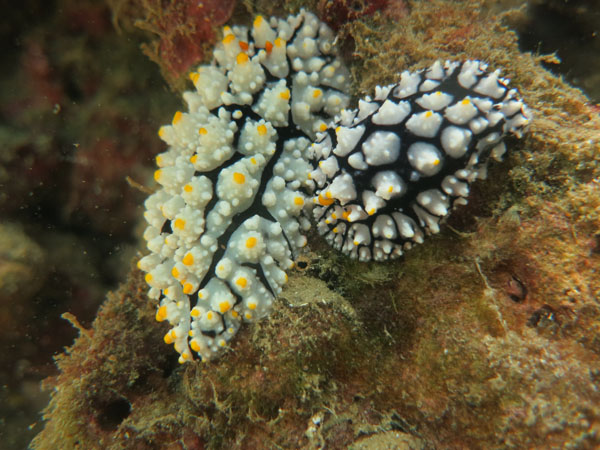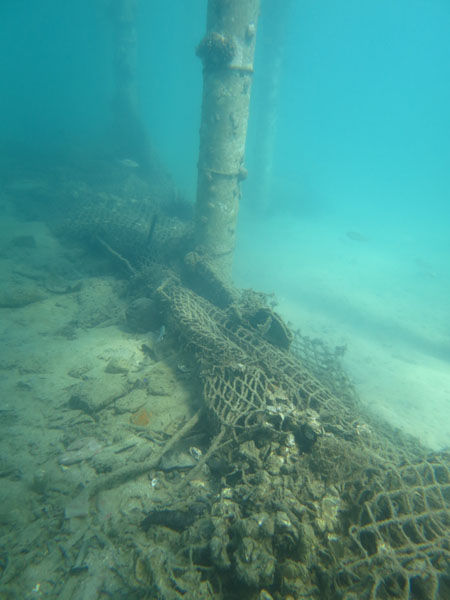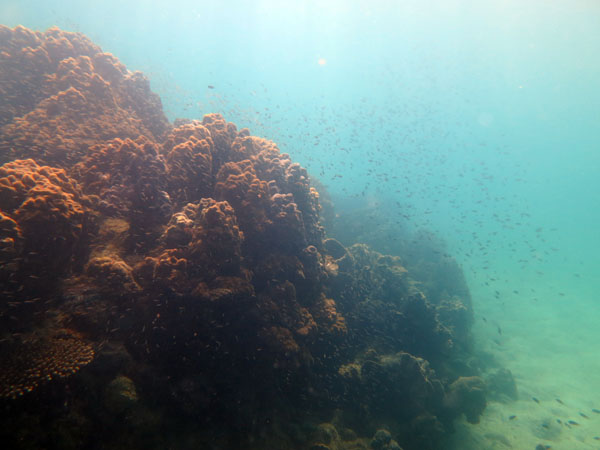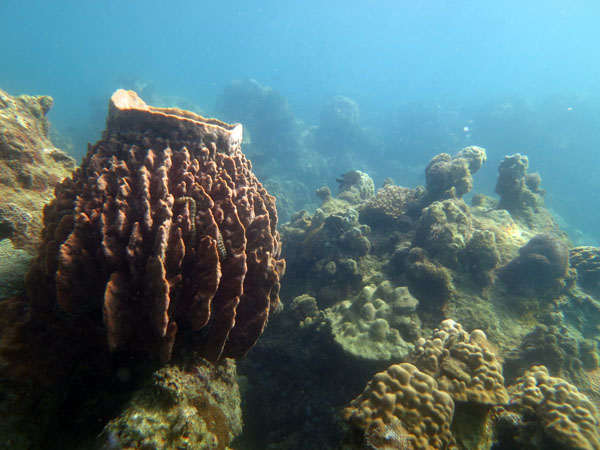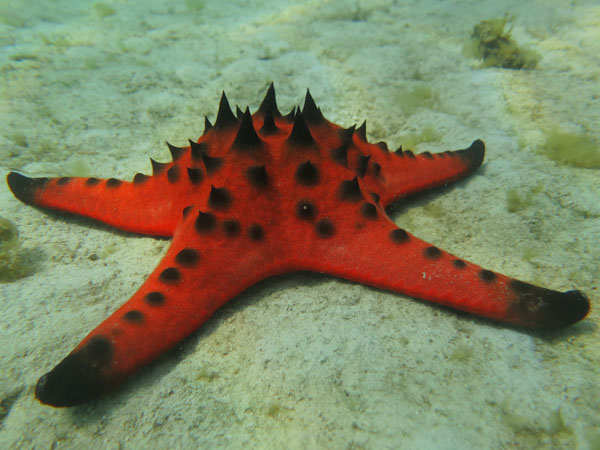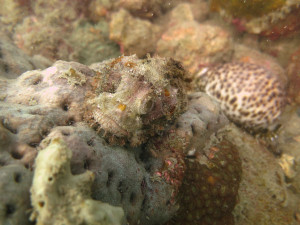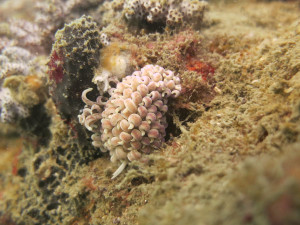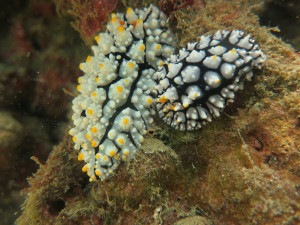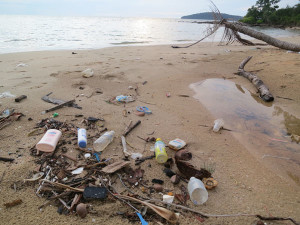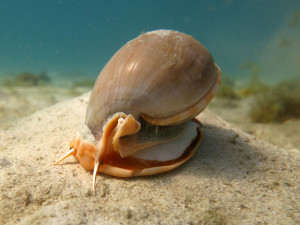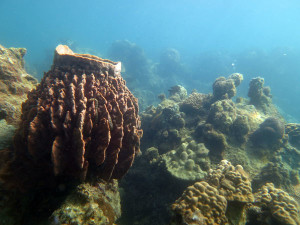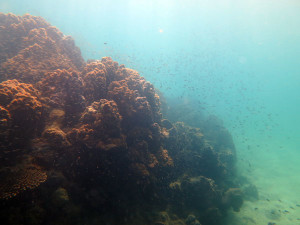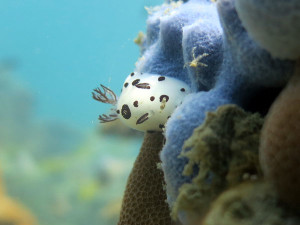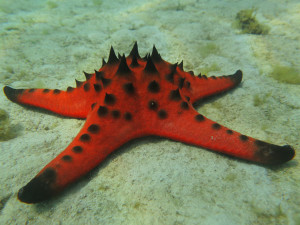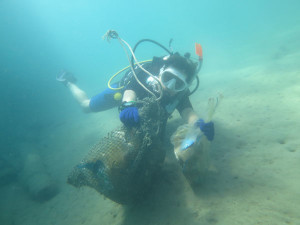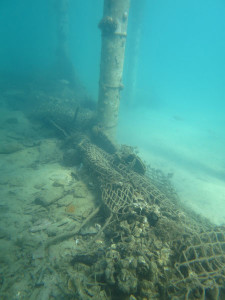I had been told not to expect much marine life when diving in Cambodia and, with that in mind, kept my hopes low when we arrived at our tiny island home, Koh Sdach, for three weeks of marine conservation work and diving with Projects Abroad. It had been a long, hot and overcrowded local bus ride for 6 hours from Phnom Penh to the jetty and then a short boat ride to the island that would be our home with the other volunteers. The first things that struck me when we arrived were the overwhelming heat and humidity and also that we would be staying within the local village itself in a stilted house. That was something I had never experienced before and I approached the idea tentatively. If I didn’t like that style of packed in, claustrophobic living, there was no escape and that preyed on my introverted mind.
To say Koh Sdach is remote is an understatement and it is nestled between unpopulated islands and surrounded by calm turquoise waters. When we arrived it felt like we had reached the end of the earth and happened upon an entirely different way of life. Our island is home to approximately 3000 people that live in very close proximity to each other within a stilted house village that is perched upon the edge of the island. The interior of the island is jungle-covered and mostly uninhabited and there is no mains sewerage, waste disposal or other modern conveniences. There is not a single tourist to be seen on the island and the ocean surrounding the island is home to both marine life and sadly also human waste. All waste that is produced in this area ends up in the water. For that reason, Projects Abroad work hard to complete regular Dives Against Debris and educate the local community about waste management and the effects of marine pollution upon their own fisheries. They are also currently trying to establish a waste management system for the island that is more sustainable.
During our first week we completed beach cleans and dives to collect marine debris and we discovered the extent of the pollution problem as we returned with sack loads of fishing net, plastic bottles, glass, plastic bags and other man-made materials. It was overwhelming at times seeing beaches at ‘Paradise Islands’ littered with waste and reminded me just how much damage humans cause to the natural environment. Don’t for a moment think this is a local problem please. Plastic in the oceans is a global problem we are all responsible for and the impacts upon marine life and marine environments is staggering. The largest area of plastic debris in the ocean is estimated to be 10 million Km2 in size and that poses a very real threat to the our health and that of marine species. A recent study has found that 90% of all seabird species have plastic in their stomachs.
We all need to use less plastic if we are to tackle this and, as scuba divers, we can go one step further by participating in underwater clean-ups such as Project AWARE’s Dives Against Debris.
Turning our eyes away from the pollution problem for a moment, as humans so easily do, I wondered what to expect from the dive sites we visited that didn’t suffer heavily from the impacts of humans. Would they be at all polluted? How would it feel being the only dive boat at dive sites very few other people get to experience? Incredible is the answer to that last question. It has been such a privilege to motor to uninhabited Islands, roll backwards into crystal clear water that is a balmy 30C and descend to dive sites varying in depth from 5m upwards. With no tourists or other divers, we were free to explore the dive sites at our leisure in a buddy team and the marine life was impressive. The array of hard corals and their intricate formations reminded me of diving sites within the Red Sea at Sharm-El-Sheikh and there were anemones as large as dinner plates being tended to by clown fish. Their jelly edges flopped over sand hummocks and provided safe haven for the juvenile clown fish.
There were abundant shoals of many species of fish swimming amongst the corals at different dive sites and I thoroughly enjoyed sitting on the sandy bottom adjacent to the shallow reefs and watching them pass me by. The advantage of the dive sites being mostly shallow was that we were able to enjoy long dives, good light and plenty of colour. With little current, we could explore slowly and enjoy ample photographic opportunities without be hurried along by other divers. There were various types of nudibranch to discover, large red starfish, particularly speedy sea-urchins, scorpion fish and the occasional octopus. Each hour of diving flew by and we were always eager to get up and begin diving each morning, especially during the hot days and after noisy, stormy nights below thunder clouds and torrential rain on our tin roof.
The diving in the area lacks larger species such as sharks and turtles and sadly you are more likely to find bamboo sharks for sale at the local market than you are whilst diving. The same can be said for the species of seahorse that are found in this area. The location of the seahorses is a closely guarded local secret which neither the project or ourselves were privy to. The presence of other marine life and the remote diving sites more than make up for that though and marine debris is certainly not present at all diving sites. When it is apparent, it is great to know we could just remove it and return to shore having achieved something positive.
If you are looking for a remote dive experience amidst a friendly, rustic tropical island community I would absolutely recommend Koh Sdach. It is not one for tourists looking for an easy way to access great diving but is definitely one for eager travellers keen to get off the beaten track, explore and experience an entirely new culture and take the lack of creature comforts as part of it. There is one dive centre on the island, Octopuses Garden (http://www.octopuscambodia.com/), which is run by a friendly Norweigan team and there is also a guest house nearby. The main village itself is small, ramshackle and has delicious Thai and Khmer restaurants that also double up as family housing and a fruit/veg market for post-dive eating. Expect to be surrounded by noisy mopeds and mosquitos, welcoming locals of all ages and a chaotic village full of chickens. You can always retreat underwater for another dose of relaxation and peace.
Learn more about the Friends for Sharks World Tour at: http://www.friendsforsharks.com
Gallery
All photos copyright Nicholas Curzon





